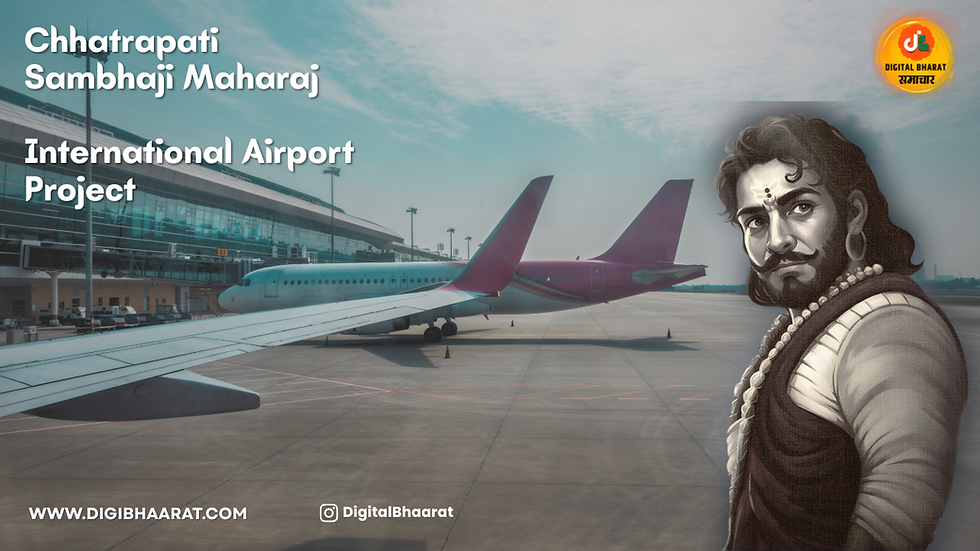Panvel-Karjat Rail Corridor Development and Impact
- Tejas Purkar

- Nov 4
- 3 min read

More Than a New Train: 4 Ways the Panvel-Karjat Corridor Is Reshaping the Mumbai Megaregion
For millions in the Mumbai Metropolitan Region (MMR), daily life is mapped by the ebb and flow of overburdened train lines and gridlocked highways. Amidst the constant hum of development, it's easy to view new construction as just another project. However, the Panvel-Karjat rail corridor, a key initiative under the Mumbai Urban Transport Project (MUTP-3), is far more than just a new set of tracks—it is actively engineering a new economic and social geography for the region.
This article explores the four most impactful takeaways from this massive infrastructure project. From slashing travel times with impressive engineering to laying the groundwork for future urban centers, the Panvel-Karjat line is set to reshape how people live, work, and connect across the region. Let's delve into what makes this 29.6 km corridor a game-changer for Mumbai.
1. It’s a Time Machine on Rails, Slashing Commutes by 30 Minutes
One of the most significant and immediate benefits of the Panvel-Karjat corridor is the drastic reduction in travel time. For countless commuters, the journey between Chhatrapati Shivaji Maharaj Terminus (CSMT) and Karjat will be cut by approximately 30 minutes. This is a substantial improvement compared to the current route via Kalyan, which can take commuters up to two and a half hours to cover the distance.
The time-saving advantages are not limited to a single route. Residents in the rapidly developing Panvel area will also gain faster access to major business hubs. Once operational, the new line will allow them to reach key commercial suburbs like Airoli, Ghansoli, and Mahape in about one hour, streamlining daily travel and opening up new employment opportunities.
2. It Features an Underground Engineering Marvel
The scale of engineering behind the Panvel-Karjat corridor is truly impressive. The project's complexity is underscored by its scale, involving the construction of three tunnels, two rail flyovers, and as many as 47 major and minor bridges.
At the heart of this engineering effort is the Wavrely tunnel. At 2.6 km, it stands as the longest tunnel being built on the entire Mumbai suburban railway line. These tunnels are not merely passages; they are equipped with modern features designed for safety and efficiency, including a ventilation system, a public refugee area, and ballast-less tracks, which not only provide a smoother and quieter ride but also require less maintenance, ensuring greater long-term reliability for the line.
3. It's the Backbone for a Future "Third Mumbai"
The corridor's impact extends far beyond transportation—it is a foundational piece of urban planning. The new double-line corridor is intentionally designed to serve as a "development catalyst" for the entire Third Mumbai region and the Navi Mumbai Airport Influence Notified Area. This reliable transit spine makes large-scale residential and commercial development viable, providing the daily lifeblood for new urban centers that would otherwise remain isolated.
This enhanced connectivity is expected to have a significant economic ripple effect. Analysts anticipate a potential "exponential rise" in land and property prices in regions like Panvel and Karjat as the project nears completion. The railway is not just connecting places; it is creating value and attracting new investments that will shape the future of these emerging urban centers.
4. It Solves Congestion on a Completely Different Route
Perhaps one of the most counter-intuitive benefits of the Panvel-Karjat line is its ability to alleviate traffic on a completely separate, heavily burdened route. Once the new corridor is operational, congestion between the perennially crowded Thane and Kalyan stations is expected to be "significantly reduced."
This is because commuters traveling from Kalyan and its surrounding areas will have a new, faster option to reach Panvel. By diverting this traffic onto the new corridor, the project effectively eases pressure on the existing route via Thane. In essence, the corridor acts as a strategic pressure-relief valve for the MMR's circulatory system, diverting flow from the chronically clogged arteries between Thane and Kalyan.
Conclusion: More Than Just a Railway
The Panvel-Karjat line is not merely an addition to the network; it is a critical intervention in the MMR's growth trajectory. Developed by the Mumbai Rail Vikas Corporation (MRVC) with a targeted completion date of December 2025, it is a multi-faceted project that saves time, showcases engineering excellence, fuels economic development, and intelligently solves regional congestion. It is a project that is actively reshaping how people will live, work, and travel across the MMR for decades to come.
As Mumbai continues to expand, what role should smart infrastructure like this play in designing the cities of tomorrow?



Comments